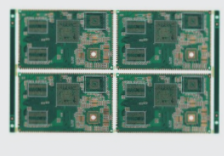Counterbore holes are cylindrical with flat bottoms, whereas countersink holes are conical recesses designed to accommodate a screw or bolt. Both types of holes are used for inserting screws or fasteners, but they have distinct characteristics and applications.

Figure 1: Countersink and Counterbore
Differences Between Counterbore and Countersink Holes
Design
Counterbore holes are designed to accommodate screws or bolts with flat-bottomed heads that are larger than the screw body. This involves creating a hole with two diameters: a larger diameter at the top to fit the head of the screw or bolt, and a smaller diameter to house the body of the screw or bolt.
In contrast, countersink holes are used for screws or bolts with tapered heads. These holes are drilled at a conical angle that matches the angle of the screw’s taper, allowing the screw or bolt to sit flush with the surface of the PCB. A variety of drill bits with different angles are available for creating countersinks, with 82 degrees and 90 degrees being common. It is important to match the countersink angle to the tapered angle of the fastener being used.
Manufacturing Flexibility
Counterbore holes, with their simple vertical design, are generally easier to drill. However, their simplicity can also limit flexibility. These holes are specifically designed to fit certain screw heads, such as socket heads or hex head bolts, which may restrict options when using non-standard screws or custom mounting solutions in a PCB design. In contrast, countersink holes offer greater adaptability due to their conical shape, which can accommodate a wider variety of screw sizes and types. This versatility allows for more options across different applications.
Choosing Between Counterbore and Countersink Holes
When deciding between counterbore and countersink holes, it’s essential to consider your design priorities. If saving space and maintaining flexibility are key, countersink holes are typically the better choice. By allowing screws to sit flush with the board, countersink holes are ideal for space-constrained devices like watches or smartphones. Additionally, countersink holes provide a smooth surface, which can be beneficial for aesthetic reasons or to prevent interference with other components.
On the other hand, if the priority is to ensure a secure and stable mounting of the board, even at the expense of space-saving or surface design considerations, counterbore holes may be the best option. Using socket screws with counterbore holes offers a more robust and reliable connection, providing a stronger hold for the board.
If you have any questions about PCBs or PCBA, please feel free to contact me at info@wellcircuits.com



